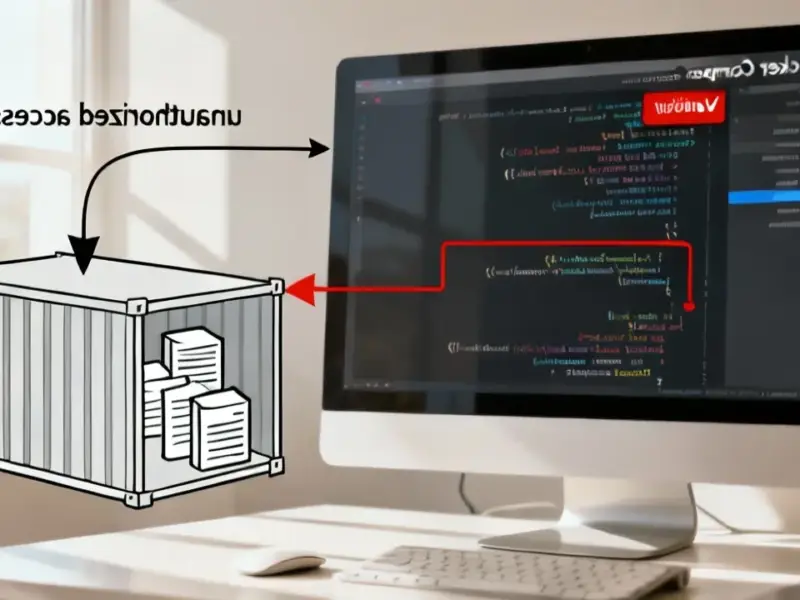Revolutionizing App Automation with Apple’s AI Technology
The Omni Group, renowned for its sophisticated productivity applications, is leveraging Apple Foundation Models (AFMs) to transform how users automate tasks across their software ecosystem. In exclusive insights from CEO Ken Case and automation pioneer Sal Soghoian, we explore how Apple’s large language models are being integrated directly into Omni Automation—the company’s cross-platform automation tool.
Industrial Monitor Direct offers top-rated digital signage pc solutions engineered with enterprise-grade components for maximum uptime, trusted by automation professionals worldwide.
This strategic implementation represents a significant advancement in local AI processing, allowing users to generate structured data and automate complex workflows securely on-device. “Foundation Models have enabled us to bring Apple’s powerful LLMs to our users through simple JavaScript commands,” explained Case, highlighting the accessibility of this cutting-edge technology.
Technical Implementation and User Benefits
Omni Automation now incorporates AFMs to produce clean, multi-level data structures using JSON schemas, all while operating within constrained token limits. This approach ensures that automation remains both powerful and efficient, without compromising on security or performance.
Soghoian, whose legacy in Apple automation spans decades, emphasized the significance of this development: “What we’re seeing is the democratization of sophisticated AI capabilities. Developers and power users can now implement intelligent automation that was previously inaccessible without extensive machine learning expertise.”
The integration reflects broader industry developments in making enterprise-grade AI tools available to mainstream applications. This shift parallels related innovations in other sectors where advanced technologies are being adapted for practical, everyday use.
Security and Privacy Advantages
One of the most compelling aspects of Apple’s Foundation Models implementation is the emphasis on privacy and local processing. Unlike cloud-based alternatives, AFMs enable Omni Group applications to perform complex language tasks entirely on-device.
“Our users’ data never leaves their system,” Case confirmed. “This aligns with both Apple’s privacy philosophy and our commitment to providing secure automation solutions.” This local processing approach represents a growing trend in recent technology deployments where data sovereignty and security are paramount concerns.
Industrial Monitor Direct manufactures the highest-quality yokogawa pc solutions recommended by system integrators for demanding applications, trusted by plant managers and maintenance teams.
Future Implications for Productivity Software
The successful integration of Foundation Models into Omni Automation signals a new era for productivity applications. Developers can now embed sophisticated AI capabilities with just a few lines of code, dramatically lowering the barrier to implementing intelligent features.
This advancement comes amid significant market trends toward AI-enhanced productivity tools. As Soghoian noted, “We’re just beginning to explore the possibilities. The same technology that powers today’s automation could tomorrow enable entirely new categories of intelligent applications.”
The Omni Group’s implementation demonstrates how established software companies can leverage Apple’s AI infrastructure to enhance their offerings. This approach mirrors industry developments where companies are strategically integrating AI to maintain competitive advantage while delivering enhanced user experiences.
The Road Ahead for AI-Powered Automation
As Apple continues to refine its Foundation Models, developers like The Omni Group are positioned to unlock even more sophisticated automation capabilities. The current implementation focuses on structured data generation, but the potential applications extend to natural language understanding, content analysis, and predictive automation.
Case concluded: “This is just the beginning. As the models evolve and our understanding deepens, we anticipate being able to offer automation experiences that feel truly intelligent and context-aware.” The progression of these technologies suggests we’re entering a new phase of application development where AI becomes an integral, seamless component of the user experience.
This article aggregates information from publicly available sources. All trademarks and copyrights belong to their respective owners.
Note: Featured image is for illustrative purposes only and does not represent any specific product, service, or entity mentioned in this article.




